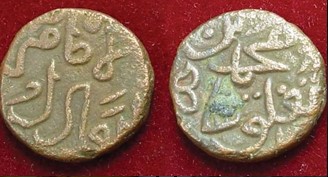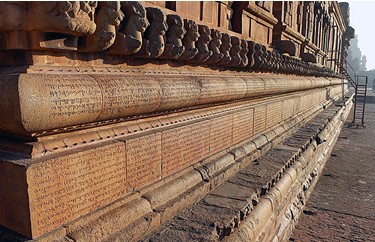Contribute
| India - The Hindu Period (500AD-1500AD) – Economy And Politics |
Hardik Dixit
04/27/2022
India saw enormous economic prosperity through export of agriculture and manufacturing surplus. Indian aromatic spices were in high demand abroad and were valued more than gold. Artwork, gold and silver-Jewelry were popular in foreign markets Maritime trade prospered and reached to the Mediterranean, the Arab countries, Persia, Rome, and much of Europe. India’s naval shore extended from Tiz (Chabahar) in Persian Gulf to southern point of Kanyakumari. Persian Gulf trade also flourished through the Malabar ports. Spices and pottery also arrived in Indonesia. Figure – 1 Trading ports of India and surrounding nations. India imported horses from Arabia, silk from China, elephants from Myanmar and rose water from West Asia. Ancient inland trade routes were redone based on terrain. Internal trading continued between east and west coasts. Marco Polo noted the astonishing prosperity in Gujarat. Figure – 2 Chola Kingdom Trade Routes and Territory Local makeshift marketplaces, called ‘Kattas’ in Bengal, developed and played an important role in rural economy. Various mercantile guilds thrived. Sreni, a group of professionals and Sangha, community of the likeminded acted as bankers. They dealt with the kings, collected money from the public extending their reach as far as Burma and Sumatra. The Portuguese were first Europeans to arrive in India by sea and conducted trade through Portuguese state-run organization, ‘Casa da India’. They eventually colonized and subjugated pockets in western India. Mahmud of Ghazani (1030AD) looted Somnath temple of Gujarat multiple times. By 1500 CE, Delhi-Sultanate, Lodi-Sultanate, Ahom-Kingdom, Vijayanagara-Empire, Gajapati-Empire, Deccan-Sultanates, Chitradurga-Kingdom, Garhwal-Kingdom, and Mysore-Kingdom, were established. Universal education that spread through classical period saw sharp decline. It resulted in social hierarchy of economic classes. Despite multiple invasions, improved infrastructure combined with increased security, and usage of silver and gold coins enhanced commerce. Kings built and maintained roads, ports, ships, as well as lavish temples to improve the socio-economic activities. India’s economy had a staggering 24.5% share of world’s GDP at the onset of 15th Century (Figure-3). Figure 3. Angus Madison (2003). “The World Economy: Historical Statisticsâ€. Vijayanagar empire confronted the Islamic invasions with the support of the southern powers. They maintained a huge army. They had strong infrastructure and were engaged in building ships. The Empire generated revenues by taxing agriculture produce, animal husbandry, social events, and gardening. The villages had their own assembly that adjudicated cases. Efficient administration and vigorous overseas trade helped develop newer technologies. (Figure 4.) Figure 4 Gajashaala or elephant's stable, built by the Vijayanagar rulers for their war elephants Delhi Sultanate was established in 1206 by Qutub-u-din-Aibak, who enforced Islamic Shariat law. Sultanate collected 1/6th of the produce as tax from agriculture, industry and land ownership. People paid taxes in the form of grains, animals, cash, raw materials, and manual labor. The revenue-system supported the army, the bureaucracy, the Sultan’s personal expenditure and the palaces. Figure – 5 Coin from the period of Muhammad ibn Tughluq of Delhi Sultanate Brahmins were respected by the locals and they assumed authority. They were exempted from the taxes and they benefited from agricultural land ownership. The upper classes could exploit the lower. Kings, large landowners, and rich merchants donated to the temples. The Sultan’s desire to extend territory resulted in power conflict between the Muslims and Hindus. Figure – 6 Gold coins of Chola Kings & Figure – 7 Silver coins of Gurjara-Pratihara king Bhoja Hindu temples and monasteries acted as powerhouses of economic activity and sometimes acted as banks. Temples housed large number of employees including dancers, teachers, drummers, goldsmiths, and accountants. Many inscriptions in temples in southern India describe donations to the temples. Figure 8 – Inscriptions on Brihadeshwara temple References: 1. A History of Ancient and Early Medieval India till 1200AD – Upinder Singh Image references - Figure 1 - A History of Ancient and Early Medieval India till 1200AD – Upinder Singh Seminar Presentation at: Authored by: Hardik Desai for India Discovery Center (IDC) (c) Copyright 2022 India Discovery Center, Inc. All rights reserved.India - The Hindu Period (500AD-1500AD) – Economy and Politics







2 - The cultural Heritage of India, Volume II
- Ramakrishna Mission - Institute of Culture, Calcutta
3 – India Discovery Center presentation by Bhavani Vankineni
https://www.indiadiscoverycenter.org/economy-and-politics-2/
4 – India A History by John Keay
5 - Angus Madison (2003). "The World Economy: Historical Statistics".
https://www.oecd-ilibrary.org/development/the-world-economy_9789264104143-en
6. - Al-Biruni’s Tahqiq-i-Hind (1000CE)
7. Evolution of the World Economy, Precious Metals and India https://eh.net/book_reviews/evolution-of-the-world-economy-precious-metals-and-india/
8 – Economic history of Bengal
https://eprints.soas.ac.uk/29147/1/10731242.pdf
Figure – 2 - https://www.ancient-civilizations.com/chola-dynasty/
Figure 3 – Angus Madison (2003). "The World Economy: Historical Statistics".
Figure 4 – Gajashala – By Shashikantha521 - Own work, CC BY-SA 3.0, https://commons.wikimedia.org/w/index.php?curid=21336984
Figure 5 - https://www.britannica.com/place/Delhi-sultanate
Figure 6,7 - A History of Ancient and Early Medieval India till 1200AD – Upinder Singh
Figure 8 - https://peppertrail.com/brihadisvara-temple-a-treasure-trove-of-culinary-inscriptions/
https://www.indiadiscoverycenter.org/economy-and-politics-2/
You may also access this article through our web-site http://www.lokvani.com/






